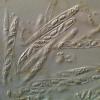
30-11-2025 12:53
 Edvin Johannesen
Edvin Johannesen
White short-stipitate apothecia found on thin twig

30-11-2025 10:47
 William Slosse
William Slosse
I recently found a collection of small Peziza sp.

27-11-2025 12:01
Thomas Læssøehttps://svampe.databasen.org/observations/10496727

27-11-2025 11:46
Thomas Læssøehttps://svampe.databasen.org/observations/10493918

17-09-2025 10:50
Heather MerryleesHi there!I am hoping for any advice on the identif

29-11-2025 08:40
 Andreas Millinger
Andreas Millinger
Hello,on a splintered part of a branch on the grou

28-11-2025 16:45
Nogueira HéctorNovember 23, 2025 Requejo de Sanabria (León) SPAI

25-11-2025 14:24
Thomas Læssøehttps://svampe.databasen.org/observations/10490522

27-11-2025 15:41
Thomas LæssøeSpores brownish, typically 4-celled; 26.8 x 2.4;

27-11-2025 11:31
Thomas LæssøeCollectors notes: Immersed ascomata, erumpent thro
Cryptosphaeria question
Chris Yeates,
30-12-2014 19:08
 Bonsoir tous
Bonsoir tousrecently while preparing a 'portrait' (see below) of the common Cryptosphaeria eunomia I noticed something which may be well-lnown but I have been unable to find any reference to it. Those who study this fungus may well know that at one stage of development of the asci they assume a ventricose shape, with a swollen central section, as the spores develop.
I noticed on this occasion that at a certain point in the ascospore development they can be clearly seen to have gel sheaths or some equivalent which separate them from their comrades in chambers, rather like clustered bubbles. This can be seen particularly in the middle right image, where the spores are mostly "end-on".
With my inadequate French I have tried to find a reference to this in this or related Diatrypaceae in Rappaz, but I have perhaps missed the obvious. If this is a well-known phenomenon I apologise for wasting people's time - have others noticed this?
Cordialement
Chris
Paul Cannon,
31-12-2014 15:00
Re : Cryptosphaeria question
No easy answers, but I noted that Laessoe & Spooner (Kew Bull. 49: 56, 1993) remarked that "The present illustration of C. eunomia (Fig. 5E in their paper) shows two distinct spore types. Although this may be an abnormal situation in the species, it clearly demonstrates its ability to produce such spores".
So it seems that the species is fairly undisciplined in its spore production. I've not seen samples like you illustrate and I'm not aware of any previous reports of gelatinous sheaths. It's tempting to dismiss such events as artefacts, but it would be interesting to recollect from the same site in the spring to establish whether this is a constant phenomenon or something caused by environmental factors such as frost.
So it seems that the species is fairly undisciplined in its spore production. I've not seen samples like you illustrate and I'm not aware of any previous reports of gelatinous sheaths. It's tempting to dismiss such events as artefacts, but it would be interesting to recollect from the same site in the spring to establish whether this is a constant phenomenon or something caused by environmental factors such as frost.
Martin Bemmann,
31-12-2014 22:47

Re : Cryptosphaeria question
Dear Chris,
consider these are mature spores in a documentation of Enrique:
http://www.asturnatura.com/fotografia/setas-hongos/cryptosphaeria-eunomia-var-fraxini-richon-rappaz-2/12619.html
www.asturnatura.com/fotografia/setas-hongos/cryptosphaeria-eunomia-var-fraxini-richon-rappaz-2/12619.html
and here some of C. exornata etc.:
http://www.mapress.com/phytotaxa/content/2014/f/p00186p270f.pdf
In both cases I would tend to see a gelatinous sheath around the spores that maybe is in the state of development with unmature spores in your case.
Regards
Martin
consider these are mature spores in a documentation of Enrique:
http://www.asturnatura.com/fotografia/setas-hongos/cryptosphaeria-eunomia-var-fraxini-richon-rappaz-2/12619.html
www.asturnatura.com/fotografia/setas-hongos/cryptosphaeria-eunomia-var-fraxini-richon-rappaz-2/12619.html
and here some of C. exornata etc.:
http://www.mapress.com/phytotaxa/content/2014/f/p00186p270f.pdf
In both cases I would tend to see a gelatinous sheath around the spores that maybe is in the state of development with unmature spores in your case.
Regards
Martin
 Cryeun0b-0001.pdf
Cryeun0b-0001.pdf